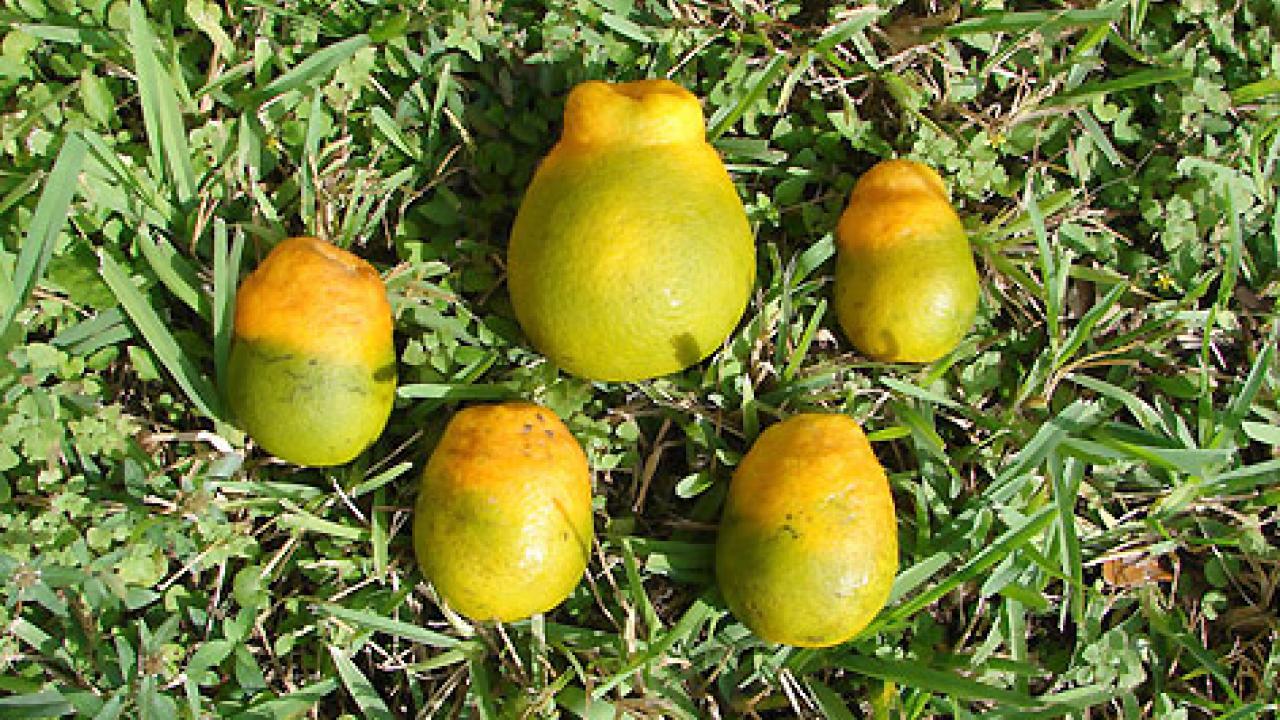
Targeting Citrus Greening Disease
UC Davis projects aim to diagnose, prevent damage caused by Huanglongbing.
Two new research projects aimed at preventing and diagnosing the devastating citrus greening disease have been launched at the University of California, Davis, funded by more than $5 million in grants from the U.S. Department of Agriculture.
USDA recently announced a new $30 million effort to combat the bacterial disease, also known as Huanglongbing, which is ravaging citrus groves in Florida and threatening the citrus industry throughout the U.S.
There is currently no cure for the disease, which causes citrus trees to gradually decline in health; produce bitter, misshapen fruit; and then die.
Preventing infections
The new funding includes a $4.5 million grant over three years to a research team led by plant pathologist Bryce Falk.
The grant, presented by the U.S. Department of Agriculture’s Specialty Crops Research Initiative, will be used to develop non-transgenic techniques that either kill Asian citrus psyllids or prevent the tiny insects from spreading the disease to citrus trees.
“This grant allows us to advance our collaborative research, which already has identified certain RNA molecules that reduce the survival of adult Asian citrus psyllids as they move onto citrus trees,” Falk said.
Findings from the research are expected to help reduce the need for pesticides in citrus groves and lower the overall costs for citrus growers, he said.
The grant will also support mathematical modeling and economic analysis, as well as extension and outreach efforts to assist growers and quickly move research developments into use in citrus groves.
Co-leading the project with Falk is William Dawson of the University of Florida. Other members of the research team are Karen Jetter of UC Davis; Peggy Lemaux of UC Berkeley; Beth Grafton-Cardwell and James Ng, both of UC Riverside; and scientists from Florida.
Better diagnosing citrus greening
In a second project, UC Davis biochemist Carolyn Slupsky is using nuclear magnetic resonance technology to better understand the effect of microbes on the metabolism of the organisms they inhabit – in this case, the citrus psyllid and the citrus tree.
She will focus on investigating short-term treatments that affect how insects acquire and transmit the bacteria that cause citrus greening disease. The research will examine how such treatments impact the extent of the disease, as measured through changes in metabolism in both the insect and the tree.
“This grant will help us find safe and effective short-term and long-term solutions for citrus greening disease, which will be important for maintaining the citrus industry in the United States,” Slupsky said.
This $10 million project, led by Kansas State University, also includes university and USDA researchers at Cornell University and at the USDA-ARS US Horticultural Laboratory in Fort Pierce, Florida. The funding includes $655,000 to support work in Slupsky’s laboratory.
Citrus greening disease has only been detected once in California, appearing in 2012 in a residential tree in the Southern California community of Hacienda Heights. However, the Asian citrus psyllid has been found in 14 California counties, resulting in quarantines of all or part of those counties.